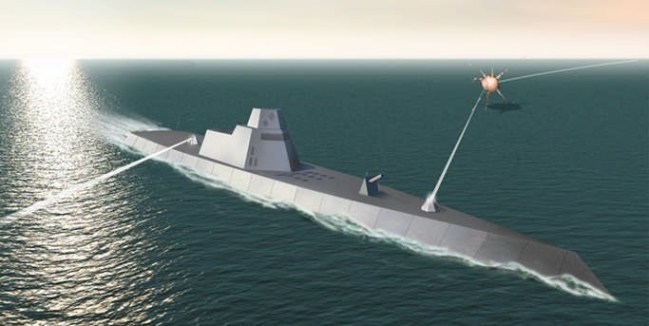
Why shoot bullets or missiles, when you can dissolve your enemies with a super laser? It’s a potentially devastating weapon that needs no ammunition, can shoot lasers right out of the sky, and can run for as long as a ship can power it. The U.S. Navy loves the idea so much, it is funding a Free Electron Laser program that hopes to have a working death ray by 2018. Well, that dream is one step closer to reality. Today, the Office of Naval Research reported that it is nine months ahead of schedule thanks to a “remarkable breakthrough” in power.
One of the biggest hurdles the superlaser program has faced is how to generate the minimum 100 kilowatts of power needed to turn the Free Electron Laser (FEL) from an annoying light to shine in other ship’s eyes to an apocalyptic beam of destruction. Until now, the prototype laser has only been able to generate about 14 kilowatts, but the Navy believes it has breached a power barrier. Scientists at Los Alamos National Lab in New Mexico tested a new injector on December 20 that produced enough electrons to “generate megawatt-class laser beams for the Navy’s next-generation weapon system.”
The laser works by generating high-energy electrons and passing them through a series of magnetic fields. The result is an “intense emission of laser light,” meaning a super cool death ray that can burn through just about anything.
“The injector performed as we predicted all along,” said Dr. Dinh Nguyen, senior project leader for the laser program. “But until now, we didn’t have the evidence to support our models. We were so happy to see our design, fabrication and testing efforts finally come to fruition. We’re currently working to measure the properties of the continuous electron beams, and hope to set a world record for the average current of electrons.”
The breakthrough is the next step in a long path toward producing a line of megawatt-class superlasers for all of the Navy’s defense vessels. Like many programs of its type, the plan to put a giant laser beam on every ship began in the 1980s, likely after a group of officers saw Star Wars and thought it was super awesome.
Here is a video the Office of Naval Research released, courtesy of PhysOrg.


